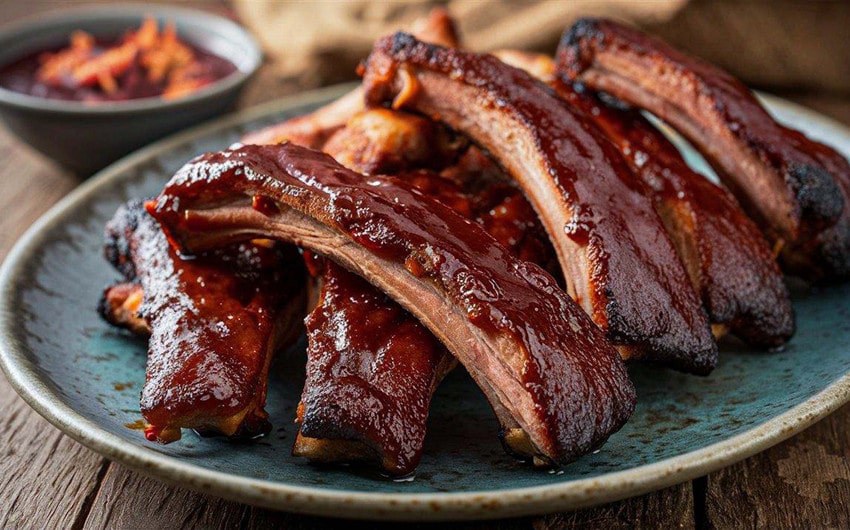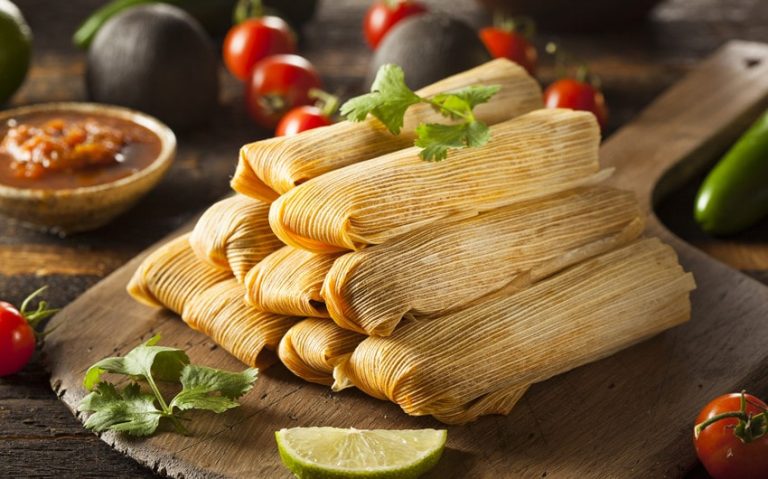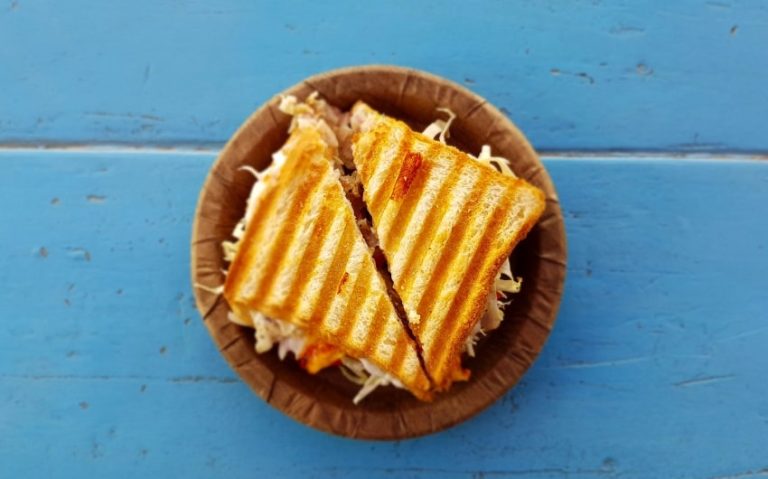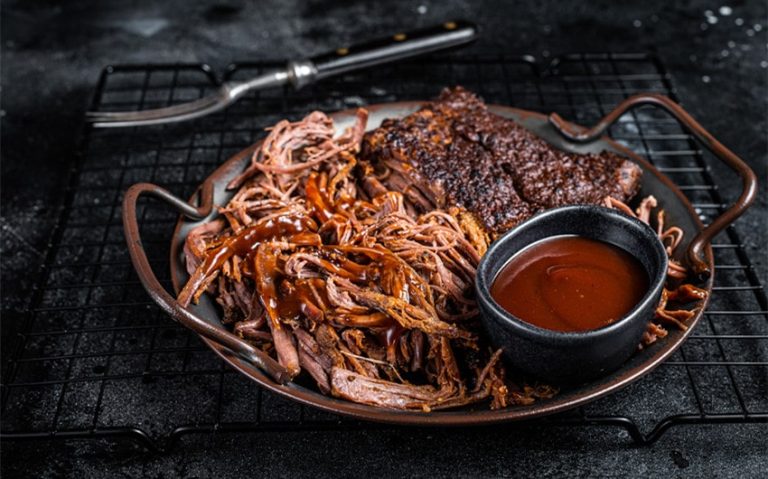Ribs Internal Temperature: A Guide for Tender, Juicy Meat
The key to perfectly cooked ribs is getting the ribs’ internal temperature just right. For tender and juicy ribs, the ideal temperature is around 190°F to 205°F. This ensures the meat is not only safe to eat but also soft enough to fall off the bone. Whether you’re grilling or smoking, knowing this temperature can make all the difference. In this guide, we’ll explain how to measure it properly so your ribs turn out perfect every time.
What Is the Ideal Internal Temperature for Ribs?

The ideal internal temperature for ribs varies slightly depending on the type of ribs and the texture you want to achieve. For safety, the USDA recommends cooking pork to a minimum internal temperature of 145°F and beef to 160°F.
However, ribs are a bit different because achieving that tender, fall-off-the-bone texture requires cooking them beyond the minimum temperature for safety.
For pork ribs, the perfect internal temperature falls between 190°F and 205°F. At this point, the connective tissues in the ribs break down, making the meat tender and easy to pull apart. Anything below this range might result in tougher ribs, while going higher may dry them out.
For beef ribs, you’ll want to aim for an internal temperature of around 200°F to 205°F. Beef ribs are thicker and fattier, so they require a longer cooking time to break down the fat and collagen, which contributes to that melt-in-your-mouth texture.
Regardless of the type of ribs you’re cooking, using a reliable meat thermometer is essential to ensure you hit the right internal temperature. The thermometer should be inserted into the thickest part of the meat, avoiding the bone, for the most accurate reading.
Cooking Methods and Their Impact on Internal Temperature
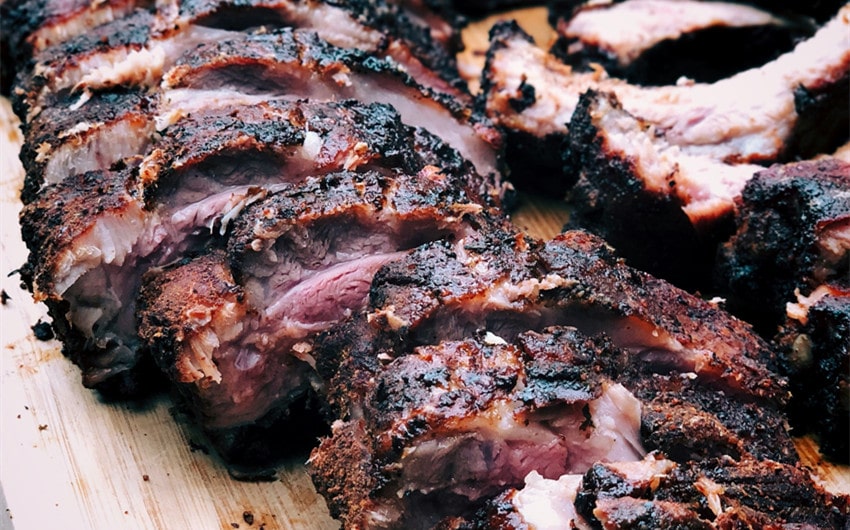
The cooking method you choose greatly impacts how the ribs’ internal temperature rises and how the final texture turns out. Here’s a breakdown of how different methods affect the internal temperature:
1. Grilling
Grilling is a popular method for cooking ribs, especially for those looking for a quick and smoky flavor. However, grilling can result in uneven heat distribution, making it harder to achieve a consistent internal temperature.
It’s important to cook the ribs over indirect heat to avoid burning the outside while ensuring the inside reaches the ideal temperature of 190°F-205°F. Low and slow grilling helps maintain moisture while allowing the ribs to reach the desired tenderness.
2. Smoking
Smoking is one of the best ways to cook ribs to perfection. This method uses low temperatures over a longer period, allowing the meat to absorb smoky flavors while gradually reaching the correct internal temperature. When smoking, ribs should be cooked at a low heat (around 225°F) for several hours.
This slow process ensures that the meat reaches the ideal internal temperature while staying moist and flavorful. Smoking gives you the best chance to hit that 190°F-205°F sweet spot, resulting in tender, flavorful ribs.
3. Oven-Baking
Oven-baking is a convenient and controlled method for cooking ribs, especially when grilling or smoking isn’t an option. Baking ribs at a low temperature, around 250°F, for a longer time ensures the meat slowly reaches the ideal internal temperature.
Wrapping the ribs in foil can help retain moisture and distribute heat more evenly, allowing them to cook thoroughly while staying tender. Once the ribs hit the right internal temperature, you can finish them off under the broiler for a crispy, caramelized exterior.
4. Slow Cooker
Using a slow cooker is another foolproof way to ensure ribs reach the proper internal temperature. Slow cooking allows the ribs to cook for an extended period at a lower temperature, often around 200°F.
This method ensures the ribs become tender without drying out, as the internal temperature gradually rises to the desired range. The slow cooker is ideal for achieving soft, pull-apart ribs, especially when time isn’t an issue.
How to Measure the Internal Temperature of Ribs

Accurately measuring the internal temperature of ribs is essential for ensuring they are both safe to eat and cooked to perfection. Here’s a step-by-step guide on how to do it correctly:
1. Use a Reliable Meat Thermometer
The best tool for checking the internal temperature of ribs is a meat thermometer. There are two main types: instant-read thermometers, which give a quick reading, and probe thermometers, which can be left in the meat throughout the cooking process.
Both work well, but for long, slow-cooked ribs, a probe thermometer allows you to monitor the temperature without having to open your grill or oven repeatedly.
2. Know Where to Insert the Thermometer
To get an accurate reading, insert the thermometer into the thickest part of the meat, away from the bone. Bones conduct heat, and if you accidentally hit the bone with the thermometer, it can give a falsely high reading. Focus on the meatiest sections of the ribs to get a precise temperature.
3. When to Check the Temperature
For slow-cooked ribs, it’s best to start checking the internal temperature about halfway through the estimated cooking time. For example, if you’re cooking ribs for six hours, check them around the three-hour mark. Afterward, continue checking every 30 minutes to ensure the ribs are progressing toward the ideal internal temperature without overcooking.
In the case of grilling or high-heat methods, you’ll want to check more frequently, especially toward the end of the cooking process.
4. Account for Resting Time
Once the ribs reach the desired internal temperature (190°F-205°F), take them off the heat and allow them to rest for 10-15 minutes. During this time, the internal temperature may rise slightly, and the juices will redistribute, making the meat even more tender and flavorful.
5. Double-Check Temperature Consistency
For ribs, especially if cooking a large rack, it’s a good idea to take readings from multiple sections of the ribs to ensure the temperature is consistent throughout. The thickest part of the ribs may take longer to cook, while thinner sections may reach the target temperature faster. Ensuring even temperature across the ribs is key to achieving perfectly cooked meat.
Final Tips for Perfect Ribs
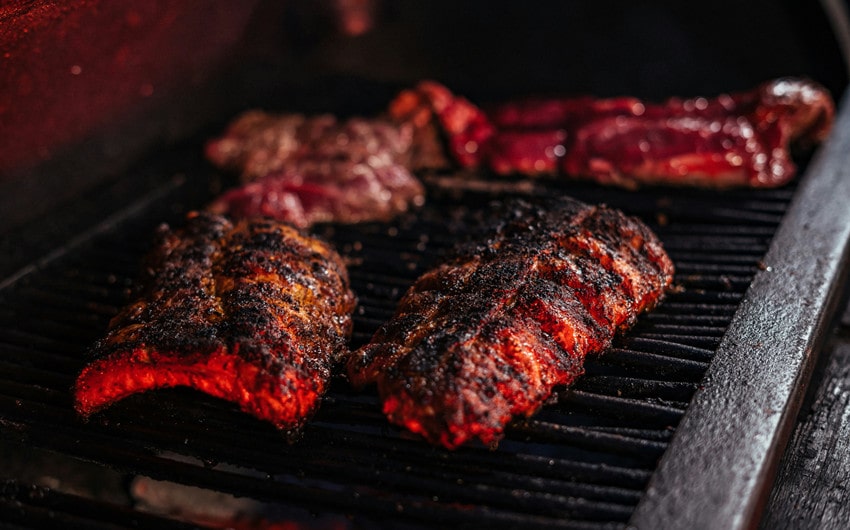
Achieving perfectly cooked ribs isn’t just about hitting the right internal temperature. Several additional tips and tricks can help you enhance the flavor, texture, and overall quality of your ribs. Here are some final tips to ensure your ribs turn out perfectly every time:
1. Cook Low and Slow
No matter what cooking method you use, ribs benefit from being cooked slowly at a low temperature. This helps break down the connective tissue and fat, resulting in tender, fall-off-the-bone meat. For smoking or oven-baking, a temperature of 225°F to 250°F works best to gradually bring the internal temperature of the ribs to the ideal range (190°F-205°F).
2. Don’t Forget to Rest
Letting the ribs rest after cooking is crucial. Once the ribs have reached the ideal internal temperature, remove them from the heat source and let them sit for about 10-15 minutes. This allows the juices to redistribute throughout the meat, ensuring each bite is flavorful and moist. Skipping this step can result in drier ribs.
3. Wrap the Ribs Mid-Cooking
For extra tender ribs, consider wrapping them in foil during the last hour or so of cooking. This technique, often called the “Texas Crutch,” helps trap moisture, speeding up the cooking process while keeping the ribs juicy.
Once wrapped, you can continue cooking the ribs until they reach the perfect internal temperature. Unwrap them for the final few minutes if you want a crispy exterior.
4. Use a Dry Rub or Marinade
The flavor of ribs starts long before they hit the grill or oven. Applying a dry rub or marinade adds layers of taste that penetrate the meat as it cooks. A well-seasoned rub with spices like paprika, garlic powder, and brown sugar can complement the smoky or roasted flavor of the ribs. Just make sure to season the ribs generously before cooking.
5. Monitor the Cooking Environment
If you’re smoking or grilling your ribs, maintaining a steady temperature is key. Fluctuations in temperature can lead to uneven cooking, causing parts of the ribs to be overcooked while others remain undercooked. Keep an eye on your smoker or grill’s temperature throughout the cooking process, and make adjustments as necessary to keep the heat steady.
6. Apply Sauce at the Right Time
If you’re adding BBQ sauce, timing is everything. Sauces with high sugar content can burn if applied too early in the cooking process. For best results, wait until the last 20-30 minutes of cooking to apply your sauce. This gives the sauce enough time to caramelize without burning, resulting in a delicious, sticky glaze on the ribs.
7. Check Internal Temperature Frequently Near the End
Once your ribs start approaching the ideal internal temperature (190°F-205°F), it’s essential to check them frequently. Ribs can go from perfectly cooked to overdone quickly, and monitoring the temperature closely ensures you pull them off the heat at the right time.
8. Add Smoke for Extra Flavor
If you’re smoking your ribs, adding wood chips like hickory, applewood, or mesquite can give your ribs that classic, smoky BBQ flavor. Just be mindful not to over-smoke, as too much can overpower the natural flavor of the meat. A balance of heat, smoke, and time is key to enhancing the taste.

